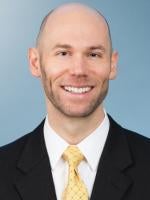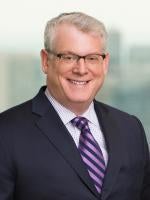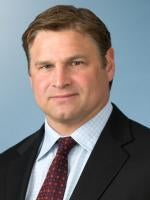In early April, the Federal Reserve announced proposed terms for the Main Street Loan Program. The program is designed to provide small and medium-sized businesses that were in sound financial condition prior to the outbreak of the COVID-19 pandemic access to reasonably priced credit in light of market disruptions caused by the pandemic. Although the initially proposed program was only open to for-profit businesses, the Federal Reserve and members of Congress have signaled for months that expanding the program to include nonprofit organizations was a priority.
On June 15, the Federal Reserve took an initial step toward making that priority a reality by releasing proposed terms for two Main Street Nonprofit Organization Loan Facilities — the Nonprofit Organization New Loan Facility (NONLF) and the Nonprofit Organization Expanded Loan Facility (NOELF). The Federal Reserve has requested feedback on these facilities by June 22. This alert summarizes the proposed terms of the facilities, aspects of the proposed terms on which potentially interested borrowers might comment and next steps for nonprofit organizations potentially interested in borrowing under the proposed facilities.
Overview
The Main Street Nonprofit Organization Loan Facilities would allow “eligible borrowers” to obtain “eligible loans” from “eligible lenders.” A special purpose vehicle (the SPV) created with a $75 billion injection of equity capital from funds appropriated to the Department of Treasury under the Coronavirus Aid, Relief and Economic Security (CARES) Act would purchase a 95% participation in eligible loans made by eligible lenders under the facilities. The Federal Reserve Bank of Boston would lend to the SPV to allow the SPV to purchase up to $600 billion of participations in the aggregate under the NONLF, the NOELF and the three Main Street facilities for for-profit businesses. The SPV would cease purchasing participations in eligible loans on September 30, 2020, unless the Federal Reserve Board and the Department of Treasury extend the facilities.
Eligible Borrowers and Eligible Lenders
Eligible lenders under the Main Street Nonprofit Organization Loan Facilities include the same institutions that are eligible lenders under the Main Street facilities for for-profit entities. Those institutions include U.S. federally insured depository institutions (including a bank, savings association or credit union), U.S. branches or agencies of a foreign bank, U.S. bank holding companies, U.S. savings and loan holding companies, any U.S. intermediate holding company of a foreign banking organization, and any U.S. subsidiary of any of the foregoing.
Eligible borrowers under the Main Street Nonprofit Organization Loan Facilities must meet the following criteria:
|
Category |
Requirement |
|
Nonprofit Status |
Tax-exempt nonprofit organization described in section 501(c)(3) of the Internal Revenue Code (IRC) or a tax-exempt veterans’ organization described in IRC section 501(c)(19) |
|
Operating History |
Established prior to, and in continuous operation since, January 1, 2015 |
|
U.S. Business |
Business is created or organized in the U.S. or under the laws of the U.S. with significant operations in and a majority of its employees based in the U.S. |
|
Size |
Maximum — Either (1) 15,000 or fewer employees or (2) 2019 annual revenues of $5 billion or less Minimum — At least 50 employees |
|
Financial Metrics |
Endowment of less than $3 billion 2019 revenues from donations (including proceeds from fund raising events, federated campaigns, gifts and funds from similar sources) less than 30% of 2019 revenues Ratio of 2019 adjusted earnings before interest, depreciation and amortization (EBIDA) to unrestricted 2019 operating revenue equal to or greater than 5% Ratio (expressed as a number of days) of (1) liquid assets (unrestricted cash and investments that can be accessed and monetized within 30 days) at the time of origination to (2) average daily expenses over the previous year, equal to or greater than 90 days Ratio of (1) unrestricted cash and investment to (2) existing outstanding and undrawn available debt, plus the amount of the loan under the facility, plus the amount of any CMS Accelerated and Advance Payments greater than 65% (at the time of origination) |
The Main Street facilities for for-profit entities have the same maximum employee and 2019 annual revenue criteria as proposed for the NONLF and the NOELF. The for-profit Main Street facilities require that businesses calculate those amounts on an aggregate basis with all of the business’s affiliates. While the proposed term sheets are not explicit on this point, we expect similar aggregation principles would apply for purposes of the NONLF and NOELF.
For purposes of calculating the financial metrics above:
- the adjustments to 2019 EBIDA must be a methodology that the eligible lender has previously used for adjusting EBIDA when extending credit to the eligible borrower or similarly situated borrowers on or before June 15, 2020.
- operating revenue would be calculated as unrestricted operating revenue, excluding funds committed to be spent on capital, and including a proxy for endowment income in place of unrestricted investment gains or losses. The methodology used to calculate the proxy for endowment income must be the methodology that the eligible lender has used for the eligible borrower or similarly situated borrowers on or before June 15, 2020.
A borrower may only participate in one of any of the Main Street Loan Program facilities and the Primary Market Corporate Credit Facility and the Municipal Liquidity Facility created by the Federal Reserve to facilitate bond issuances. In addition to the criteria above, a business may not participate in any of the Main Street facilities if it is one of the air carriers or businesses critical to national security that received specific support under section 4003(b)(1)-(3) of the CARES Act. However, organizations that received a loan under the CARES Act’s popular Paycheck Protection Program (PPP) may borrow under the Main Street Loan Program facilities if they satisfy the other eligibility criteria.
Eligible Loans
Loans extended under the Main Street Nonprofit Organization Loan Facilities must have the terms specified below. The terms for loans under the Main Street Nonprofit Organization Loan Facilities are substantially similar to the terms for Main Street facilities available to for-profit businesses. Unlike loans originated under the PPP, loans under the Main Street Lending Program are not forgivable and must be repaid by the borrower. Section 4003(d) of the CARES Act prohibits the forgiveness of principal of any obligation issued by an eligible business under a program using funds allocated to the Department of Treasury under the CARES Act that has been used to establish the Main Street facilities.
|
Feature |
NONLF |
NOELF |
|
Type of Loan |
term |
term (though underlying loan can be term or revolving credit facility) |
|
Maturity |
5 years |
|
|
Minimum Loan Size |
$250,000 |
$10 million |
|
Maximum Loan Size |
lesser of $35 million or the Eligible Borrower’s average 2019 quarterly revenue |
lesser of $300 million or the Eligible Borrower’s average 2019 quarterly revenue |
|
Lender Risk Retention |
5% |
|
|
Principal and Interest Deferral |
Principal = 2 years Interest = 1 year (unpaid interest will be capitalized) |
|
|
Principal |
Year 3 = 15% Year 4 = 15% Year 5 = 70% |
|
|
Interest Rate |
LIBOR (1 or 3 month) + 3% |
|
|
Collateral |
secured or unsecured |
|
|
Rank/Security Requirement |
must not be contractually subordinated to any other debt
|
at the time of upsizing and at all times the upsized tranche is outstanding, the upsized tranche must be senior to or pari passu with other debt (other than mortgage debt) |
|
Prepayment |
Prepayment permitted without penalty |
|
|
Fees |
transaction fee of 1% of eligible loan (payable to SPV by lender or borrower) origination fee of up to 1% of eligible loan (paid to lender by borrower) servicing fee of .25% of SPV participation per annum (paid by SPV to lender) |
transaction fee of .75% of upsized tranche (payable to SPV by lender or borrower) upsizing fee of up to .75% of upsized tranche (paid to lender by borrower) servicing fee of .25% of SPV participation per annum (paid by SPV to lender) |
Other Requirements
Eligible loans must have had an internal risk rating equivalent to a “pass” in the Federal Financial Institution Examination Council’s supervisory rating system as of December 31, 2019 for the NOELF. This is also required for the NONLF if the Borrower had other loans outstanding with the Eligible Lender as of December 31, 2019. Eligible lenders will utilize their own application processes and additional underwriting standards in connection with analyzing loans sought by eligible borrowers.
Eligible lenders under the Main Street Nonprofit Organization Loan Facilities must make the following certifications and covenants, which are similar to the lender certifications and covenants under the Main Street facilities for for-profit entities, with conforming changes based on the different terms for the nonprofit and for-profit facilities:
- The lender must commit that it will not request that the borrower repay debt extended by the lender to the borrower, or pay interest on such outstanding obligations, until the Main Street loan is repaid in full, unless the debt or interest payment is mandatory and due, or in the case of default and acceleration.
- The lender must commit that it will not cancel or reduce any existing committed lines of credit to the borrower, except in an event of default.
- The lender must certify that the methodology used for calculating the borrower’s (i) adjusted 2019 EBIDA and (ii) the proxy for endowment income used when calculating operating revenue is the methodology it has previously used when extending credit to the eligible borrower or similarly situated borrowers on or before June 15, 2020.
- The lender must certify that it is eligible to participate in the facility, including in light of the conflicts of interest prohibition in section 4019(b) of the CARES Act (which prohibits any business that is owned by the president, senior executive branch officials or members of congress — or certain of their immediate family members — from receiving any relief funds).
Eligible borrowers under the Main Street Nonprofit Organization Loan Facilities must make the following certifications and covenants, which are similar to borrower certifications and covenants under the Main Street facilities for for-profit entities, with conforming changes based on the different terms for the nonprofit and for-profit facilities:
- The borrower must commit to refrain from repaying the principal balance of, or paying any interest on, any debt until the Main Street loan is repaid in full, unless the debt or interest payment is mandatory and due.
- The borrower must commit that it will not seek to cancel or reduce any of its committed lines of credit with the eligible lender or any other lender.
- The borrower must certify that it has a reasonable basis to believe that, as of the date of origination of the eligible loan and after giving effect to the loan, it has the ability to meet its financial obligations for at least the next 90 days and does not expect to file for bankruptcy during that time period.
- The borrower must commit that it will follow compensation, stock repurchase and capital distribution restrictions that apply to direct loan programs under section 4003(c)(3)(A)(ii) of the CARES Act, which are summarized below.
- The Eligible Borrower must certify that it is eligible to participate in the facility, including in light of the conflicts of interest prohibition in section 4019 of the CARES Act.
Section 4003(c)(3)(A)(ii) of the CARES Act requires that, until 12 months after a direct loan is no longer outstanding, the borrower must:
- ·not purchase equity securities of borrower or parent that are listed on a national securities exchange; provided that existing contractual obligations as of March 27, 2020, may be honored.
- ·not pay dividends or other capital distributions with respect to the common stock of the borrower.
- comply with the compensation restrictions for officers and employees (for those that made (i) $425,000 or more in 2019, they may not exceed their 2019 compensation in any 12-month period and their severance is capped at 2x their 2019 compensation, and (ii) $3 million or more in 2019, they may not exceed $3 million plus 50% of their 2019 compensation over $3 million, in any 12-month period).
Potential Items for Comment
The Federal Reserve is seeking comments on the proposed terms of the Main Street Nonprofit Organization Loan Facilities by June 22. As noted above, many of the proposed terms for the Main Street Nonprofit Organization Loan Facilities are consistent with Main Street facilities for for-profit entities, which became operational earlier in June. The Federal Reserve has publicly stated on multiple occasions that it is open to adjusting the terms for the Main Street Loan Program depending on the level of participation in its facilities. The Federal Reserve already has lowered the minimum loan size, increased the maximum loan size and adjusted the term and payment schedule for the Main Street loan facilities for for-profit entities between the initial announcement of those facilities and their launch. In light of the significant effort that the Federal Reserve put into refining loan terms that it deemed appropriate in connection with the Main Street facilities for for-profit entities, we do not expect that the Federal Reserve will be receptive to many changes to the initially proposed terms for eligible loans under the Main Street Nonprofit Organization Loan Facilities, although commentary on the appropriateness of the proposed minimum and maximum loan sizes in light of the unique needs and circumstances of nonprofit organizations could be welcomed in light of the expansion of the Main Street Loan Program to a new type of entity.
The criteria for eligible borrowers under the proposed terms of the Main Street Nonprofit Organization Loan Facilities is the area on which the Federal Reserve likely will be most interested. Because extensions of credit under the Main Street Loan Program are loans that are designed to be repaid, the criteria for eligible borrowers are designed to help ensure the borrower’s creditworthiness. However, the facilities’ criteria also should be flexible enough to allow an appropriate number of organizations that were in sound financial condition pre-pandemic to access the facilities. As a result, the proposed five-plus year operating history requirement and various financial metrics that eligible borrowers must satisfy may be adjusted prior to the Main Street Nonprofit Organization Loan Facilities’ launch. Specifically, the operating history requirement could be seen as unnecessarily long and limiting. The effect of the 30% limitation on donations as a part of 2019 revenues and the required ratio of liquid assets to average daily expenses over the previous year could have a significant effect on the number of eligible borrowers that could participate in the facilities, especially considering that the liquid asset ratio requirement gives limited effect to any cost reduction actions that organizations might have taken recently and disregards any additional liquid assets that organizations might generate from operations to continue to pay expenses for the quarterly period following origination.
Nonprofit organizations other than those described in IRC sections 501(c)(3) and 501(c)(19) potentially interested in participating in a Main Street Nonprofit Organization Loan Facility also might be interested in commenting on expanding the proposed limited scope of eligible nonprofit organizations. The need for liquidity during the pandemic will extend beyond the limited scope of “Nonprofit Organizations” as defined in the proposed term sheets. With appropriate (and potentially revised) financial criteria for eligible borrowers, the Main Street Nonprofit Organization Loan Facilities could achieve the macroeconomic benefits of supporting nonprofit organizations that contribute to the U.S. economy while also protecting U.S. taxpayers by opening the facilities to a broader group of organizations.
Potentially interested borrowers can provide their comments on the eligible borrower criteria and other proposed terms here.
Next Steps for Potential Borrowers
The following are action items for prospective borrowers considering a loan under one of the Main Street Nonprofit Organization Loan Facilities:
- Begin gathering documentation to confirm whether you would be an eligible borrower, including your most recent financial statements, determining the current status of your fiscal year 2019 audit, if not already complete, and the expected timing for completion of that audit. Even if the eligible borrower criteria are adjusted as a result of the comment process, we expect that the categories of financial information that will be needed to confirm eligible borrower status will remain similar to the initially proposed terms.
- Contact lenders that you know to confirm whether they are an eligible lender who plans to participate in the Main Street Loan Program so that you can begin the approval process. For borrowers entering into a new relationship with an eligible lender, this approval process is likely to take longer than a borrower seeking an upsized tranche under the NOELF. Eligible lenders could receive many requests for financing under the Main Street Loan Program and therefore we recommend interested borrowers get in line as quickly as possible.
- Analyze the maximum loan amount available for the type of facility expected to be used and the amount of the loan that you would seek to obtain in light of the business’s current financial position, recent results of operations and projected financial performance.
- Analyze your existing agreements to determine if any action is required, such as amendments, waivers of defaults and notices. For example, if you have several lending relationships and seek a loan under the NOELF, then the other facilities likely would need to be amended to permit the upsized tranche under the NOELF as the incurrence of additional indebtedness could be a breach of a negative covenant, which typically triggers an automatic event of default. Similarly, subordination and intercreditor agreements will likely need to be amended as many include provisions that would be violated by the incurrence of an eligible loan under the Main Street Nonprofit Organization Loan Facilities.
- Prepare board materials to demonstrate due care was used in determining whether to apply for a loan. These materials should include a thorough analysis of your recent operating results and financial position and near-term projections to support the required certifications that (1) the eligible borrower has a reasonable basis to believe that, as of the date of origination of the eligible loan and after giving effect to the loan, it has the ability to meet its financial obligations for at least the next 90 days and does not expect to file for bankruptcy during that time period and (2) as required under the Federal Reserve Act, the amount, price or terms of credit available from other sources are inadequate for the eligible borrower’s needs during the current unusual and exigent circumstances.






 i
i


